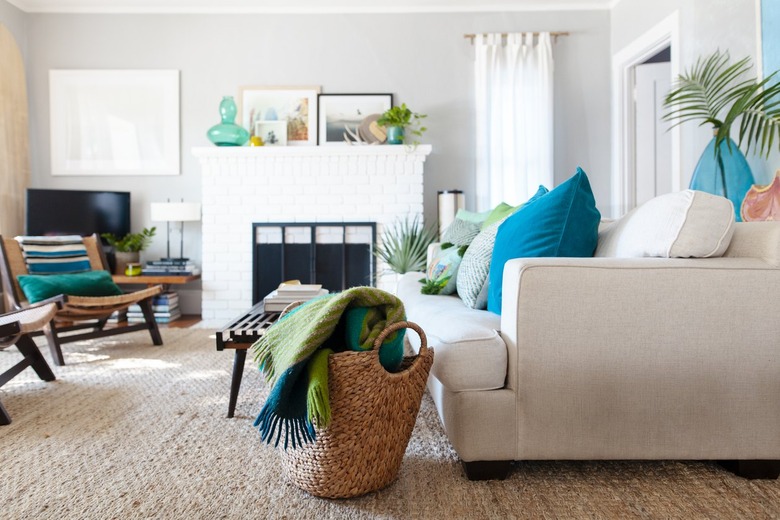What Is Furniture Fabric Grade?
We may receive a commission on purchases made from links.
Furniture fabric grade is a measure of the cost of producing a certain fabric used to upholster furniture. Usually based on a scale of A through F, it seems logical that a fabric's grade could help you choose a durable fabric for your upholstered furniture. The grading system is not this straightforward, however, and is actually of very little use when shopping for furniture.
What Furniture Fabric Grade Is
What Furniture Fabric Grade Is
The furniture fabric grade is a measure used by the manufacturer to categorize furniture fabrics by cost. Although an A through F grading scale likely looks familiar to most of us from our school days, the scale works backward when used to grade furniture. Typically, A indicates the least expensive fabric and F the most costly.
When looking at the furniture upholstery grading scale, avoid making the mistake of confusing cost and quality. The scale measures fabric production cost only. For example, a fabric with an expensive dye or intricate weave may cost more to make. A fabric with a nap or selvage that results in additional waste material may also cost more to use.
While all these factors drive up costs and therefore the fabric grade, none of them necessarily indicate quality. Buying a piece upholstered in grade F fabric ensures you will pay more for it but doesn't guarantee you'll have a high-quality, durable product.
What Furniture Fabric Grade Isn't
What Furniture Fabric Grade Isn't
When shopping for upholstered furniture, be aware that the grades on furniture fabric are not universal. They vary from one manufacturer to another, making them useless as a point of comparison. One company may use a scale of A through F, while another may have a scale of A through J. Some companies use numbers instead of letters, and others may use a different designation altogether.
What To Look For Instead
What To Look For Instead
Although furniture fabric grades can only help you determine how expensive a piece of furniture may be, don't despair. There are other indicators of a fabric's quality that you can look for, such as:
- Rub count: To arrive at the rub count, which measures the durability of a fabric, an abrasive machine rubs the fabric repeatedly until it shows signs of damage or tears. Fabrics with a rub count of 10,000 to 15,000 will work for a formal living room or other light domestic use. If you have kids or pets, however, a rub count of 25,000 to 30,000 or more is better.
- Repellency and stain resistance: The higher a fabric's repellency rate, the more likely liquids are to bead up and roll off the fabric rather than soaking in. Stain resistance is a measure of how likely a spill is to come out of the fabric without leaving a mark or discoloration behind. Fade resistance will help you determine if the fabric will fade in direct sunlight or hold its color for a longer period of time. You want high fade resistance in a sunroom or other bright spaces.
- Cleaning instructions: Make sure you check out a fabric's cleaning instructions. Some fabrics clean up easily with water-based cleansers, while others may require solvents. Realistically, the easier the fabric is to clean, the longer you're likely to have it.
